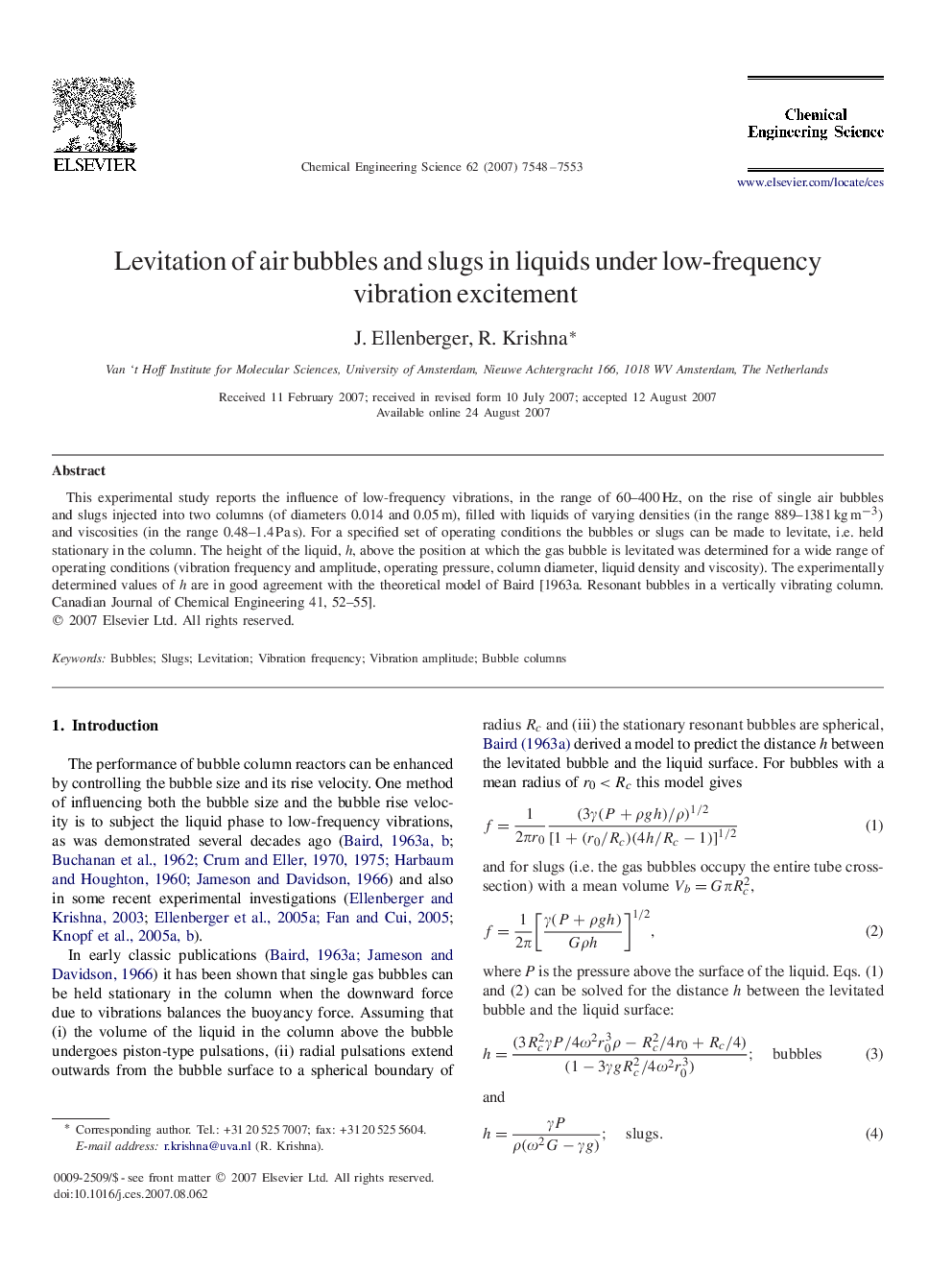| Article ID | Journal | Published Year | Pages | File Type |
|---|---|---|---|---|
| 158674 | Chemical Engineering Science | 2007 | 6 Pages |
This experimental study reports the influence of low-frequency vibrations, in the range of 60–400 Hz, on the rise of single air bubbles and slugs injected into two columns (of diameters 0.014 and 0.05 m), filled with liquids of varying densities (in the range 889–1381kgm-3) and viscosities (in the range 0.48–1.4 Pa s). For a specified set of operating conditions the bubbles or slugs can be made to levitate, i.e. held stationary in the column. The height of the liquid, h, above the position at which the gas bubble is levitated was determined for a wide range of operating conditions (vibration frequency and amplitude, operating pressure, column diameter, liquid density and viscosity). The experimentally determined values of h are in good agreement with the theoretical model of Baird [1963a. Resonant bubbles in a vertically vibrating column. Canadian Journal of Chemical Engineering 41, 52–55].
